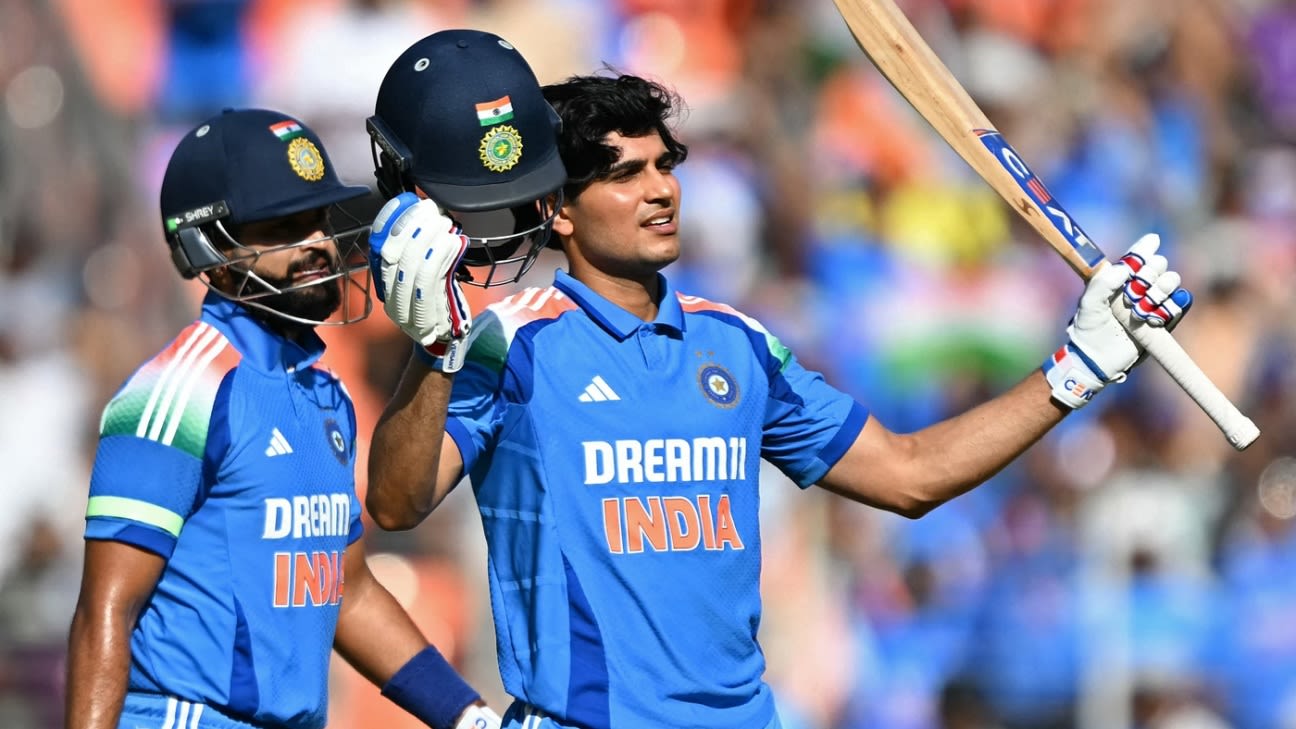 |
|
The third and final One Day International (ODI) match between India and England witnessed a spectacular display of batting prowess from the Indian side, culminating in a challenging 356-run target for the visitors. The foundation of India's imposing total was laid by Shubman Gill, who celebrated his 50th ODI appearance with a magnificent century. His 112 runs, a testament to his burgeoning talent and consistency, marked his seventh ODI hundred, a remarkable achievement considering no other Indian batter has reached this milestone in their first 50 caps. The innings showcased Gill's maturity and versatility, seamlessly adapting to the conditions and showcasing a full repertoire of strokes. His innings was not solely about power hitting; it was a demonstration of calculated aggression and elegant strokeplay, a masterclass in ODI batting.
Gill's partnership with Virat Kohli, who contributed a well-paced 52, further solidified India's position. Their 116-run stand was a crucial phase in the innings, providing the necessary momentum and stability. Kohli, despite not reaching a century, continued to display his remarkable consistency and ability to anchor the innings. His experience and understanding of the game were crucial in guiding Gill and ensuring a strong platform for the middle order. The partnership showcased a perfect blend of youth and experience, a hallmark of successful cricketing partnerships. The seamless transition from Gill's aggressive style to Kohli's steady batting demonstrated the versatility within the Indian batting line-up.
Shreyas Iyer further strengthened India's position with a breezy 78 off just 64 deliveries. His explosive innings formed a 104-run partnership with Gill, adding to the already impressive score. Iyer's contribution was crucial in accelerating the scoring rate during the middle overs, shifting the momentum decisively in India's favor. His innings highlighted the depth and strength within the Indian batting line-up, showcasing the team's capacity to post massive totals. The ease with which he dispatched the bowling further illustrated the dominance of the Indian batsmen throughout the match.
Despite the impressive batting display, Adil Rashid emerged as a thorn in India's side, claiming 4 wickets for 64 runs – his best ODI figures in India. His performance provided England with some respite, breaking key partnerships and limiting India's total. Rashid’s skill and experience were instrumental in curbing India’s run flow. His ability to take wickets at crucial moments highlighted his invaluable contribution to England’s bowling attack. Despite Rashid’s brilliance, India managed to amass a formidable total, setting a challenging chase for England in the final ODI of the series.
England’s decision to bat first after winning the toss proved to be a strategic misstep. Their bowlers faced an uphill battle against the aggressive Indian batting line-up. Gus Atkinson endured a particularly challenging day, concluding his tour with figures of 1 for 74 from eight overs, showcasing the overall dominance of the Indian batting. The early dismissal of Rohit Sharma by Mark Wood set a slightly ominous tone, but it ultimately served as a mere blip in an otherwise stellar performance by the Indian batting order. The early dismissal of Rohit Sharma served as a wake-up call for the Indian batsmen, encouraging them to play with greater caution and strategic awareness in their approach to scoring.
The match also highlighted the importance of partnerships in ODI cricket. The consistent run-scoring through partnerships allowed India to accumulate a sizable total, putting immense pressure on the English team. The success of these partnerships demonstrated the cohesiveness of the Indian team, the ability of their batsmen to understand each other's strengths and weaknesses, and the supportive nature of their team dynamic. The Indian batting order operated as a well-oiled machine, ensuring a constant flow of runs, maximizing their opportunities, and capitalizing on England's bowling shortcomings.
In conclusion, India's impressive 356-run total was a result of outstanding individual performances and strategic partnerships. Shubman Gill's century, coupled with crucial contributions from Virat Kohli and Shreyas Iyer, laid the foundation for a commanding position. Despite Adil Rashid's notable bowling performance, India’s superior batting line-up proved too strong for England to handle. The match serves as a testament to the growing strength and depth of the Indian cricket team, setting the stage for a potentially dominant performance in the upcoming ICC Champions Trophy.
Source: Gill century, Kohli, Shreyas fifties leave England chasing 357
